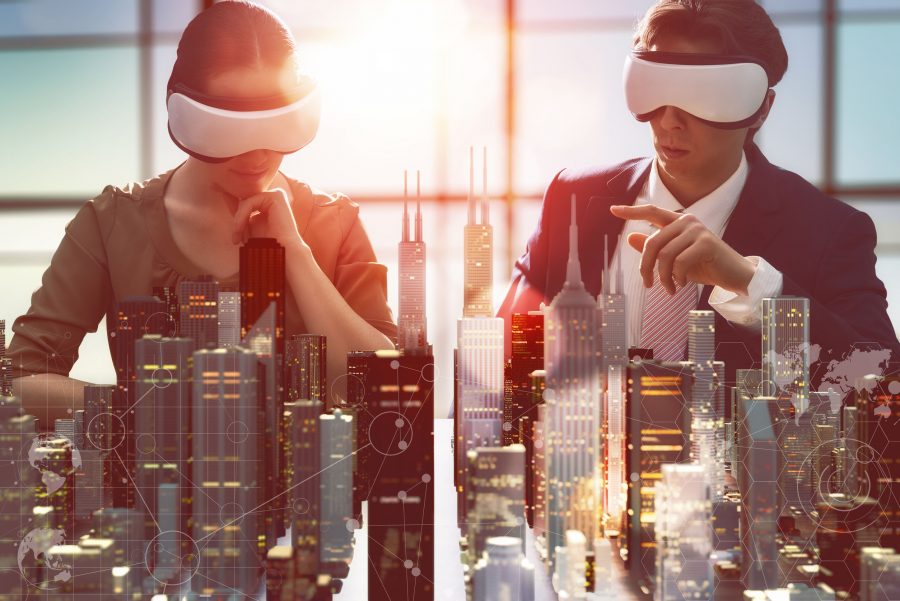What is Virtual Reality?
54018554 – two business persons are developing a project using virtual reality goggles. the concept of technologies of the future
December 2, 2016
Have you ever wanted to experience flying, swimming with dolphins, or even riding an elephant in Africa? You can do all this in the comfort of your living room, using virtual reality.
Virtual reality is an environment we perceive as real, meaning “near-reality,” a version of reality that isn’t really there. Virtual reality is the term used to describe a three-dimensional, computer-generated environment.
How does it work?
Using computer technology to manipulate objects through headsets, omni-directional treadmills, and special gloves, these generated environments can become very real to us. However, this is more difficult to achieve than it sounds because, according to the website of the Virtual Reality Society, “If anything is even a little off we can usually tell.”
By stimulating our senses together to form an illusion of reality, virtual reality brings the user into the digital world by cutting off outside stimuli. Solely focusing on the digital content, our senses and brains have evolved to provide us with a finely synchronized experience. Implementation of virtual reality manages to get the combination of hardware, software and sensory synchronicity just right to achieve something known as “a sense of presence,” wherein the subject really feels like they are present in that environment.
A coordination between the person’s head and eye movements and the appropriate changes in perception ensures the virtual environment is both realistic and enjoyable. In these artificially created sensory experiences, one can typically “look around” the artificial world, move about in it, and interact with features or items that are depicted on a screen.
There are many different types of virtual reality systems, but they all share the same characteristics, such as the ability to allow the person to view three-dimensional images that appear life-size to the person, with realistic images, sounds and other sensations that replicate a real environment, or create an imaginary setting.
What is VR used for?
Virtual reality allows us to take virtual risks to gain real-world experiences. Virtual worlds combine the power of 3D graphics and the Internet, giving users the ability to create new versions of themselves within a virtual world or to do things that are difficult in the real world. For example, psychologists and other medical professionals are using VR to heighten traditional therapy methods to find effective solutions for treatments such as PTSD, anxiety, and social disorders. VR will soon allow doctors to train medical students in surgery, treat patients’ pain and even help paraplegics regain body functions.
“Virtual reality technology holds enormous potential to change the future for a number of fields, from medicine, business, architecture to manufacturing,” according to the website of Fortune magazine.
What’s next in VR?
According to the Virtual Reality Society, “The latest developments have actually really slowed in the recent years, and recent progress isn’t really recent.” This is likely happening because of public disappointment in early products, especially because of the high expectations created by media hype. “In the tech world, a lot happens in a week,” according to DigitalTrends.com.
VR already has a heavy influence on consumer products in use today. Products range from games to revolutionary input devices, including Oculus Touch, which uses a pair of hand grips that are expected to take VR interactivity to new heights, according to USA Today. These controllers use buttons to communicate commands to the game, with one’s hand motion tracked in real time. Compatible games will debut soon, such as Kingspray, which will allow players to spray-paint a mural on a large virtual brick wall.
Outsider, an innovation production studio, says, “I would love to see the virtual reality world go mainstream outside of gaming, where it really can change the world for the better.”
The virtual worlds that people have created for themselves have become so popular that they may become the cornerstone of further VR developments. The Virtual World Society claims it is “changing hearts and minds to build a better world.”


